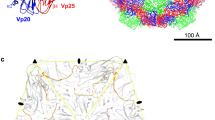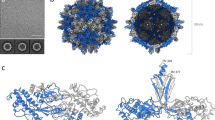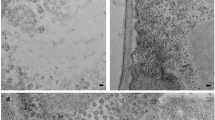Abstract
SEVERAL plant viruses have been found to occur as elongated particles of variable length and 10–15 mµ in width. Leyon1 has published electron micrographs showing such rod-like particles with a width of about 10 mµ in sap from plants infected with beet yellows virus and in the specific precipitates produced by mixing the sap with its antiserum. We have also found rods in these two kinds of preparation. They do not occur in sap from healthy beet plants, and by analogy with other viruses which have been purified it could readily be assumed that the rods are the virus particles themselves. There are, however, other factors which make this assumption less tenable and suggest that the rods are not the only anomalous component in sap from infected plants.
This is a preview of subscription content, access via your institution
Access options
Subscribe to this journal
Receive 51 print issues and online access
$199.00 per year
only $3.90 per issue
Buy this article
- Purchase on Springer Link
- Instant access to full article PDF
Prices may be subject to local taxes which are calculated during checkout
Similar content being viewed by others
References
Leyon, H., Arkiv Kemi, 3, 10 (1951).
Kleczkowski, A., and Watson, M. A., Ann. App. Biol., 36, 320 (1944).
Bawden, F. C., and Nixon, H. L., J. Gen. Microbiol., 5, 104 (1951).
Author information
Authors and Affiliations
Rights and permissions
About this article
Cite this article
NIXON, H., WATSON, M. Beet Yellows Virus. Nature 168, 523–524 (1951). https://doi.org/10.1038/168523b0
Issue Date:
DOI: https://doi.org/10.1038/168523b0
This article is cited by
-
Elektronenmikroskopische und serologische Untersuchungen �ber das Vergilbungsvirus der Beta-R�ben
Die Naturwissenschaften (1957)
Comments
By submitting a comment you agree to abide by our Terms and Community Guidelines. If you find something abusive or that does not comply with our terms or guidelines please flag it as inappropriate.



